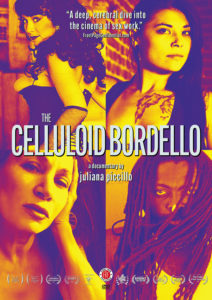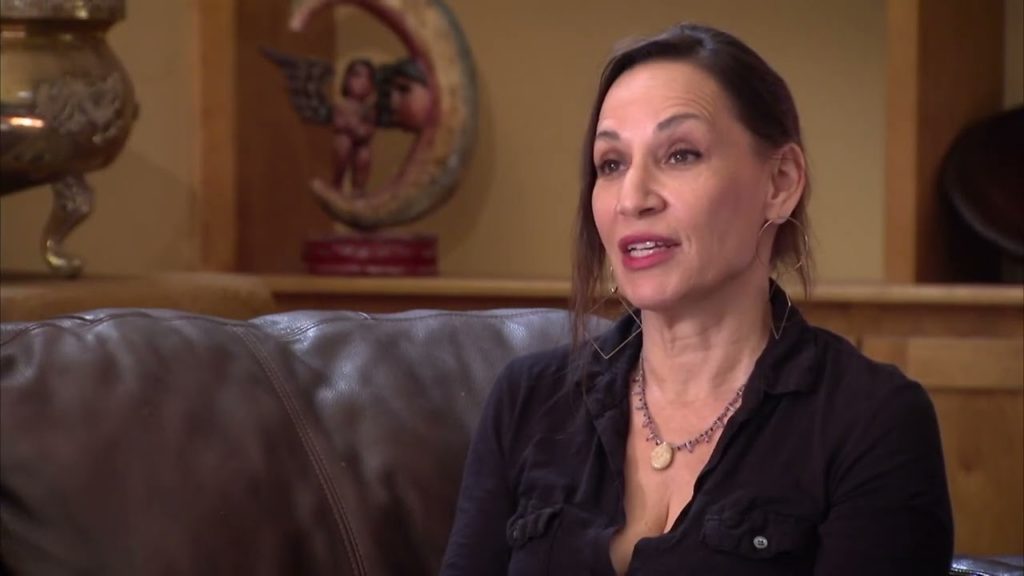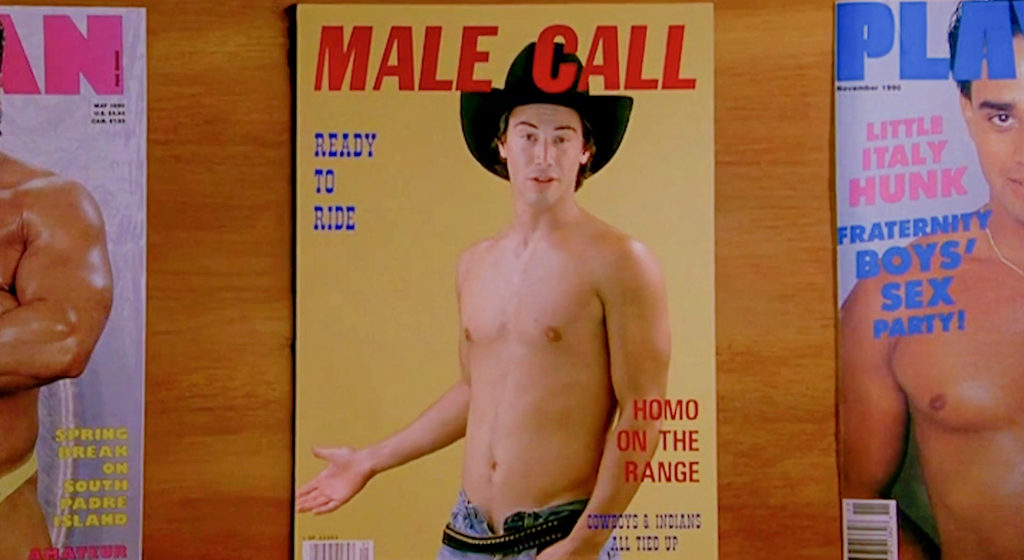Sex Workers Speak up About a Century-plus of Negative Representation in films
DIRECTED BY JULIANA PICCILLO/2021
DVD STREET DATE: JANUARY 10, 2023/FIRST RUN FEATURES (via Kino Lorber)

If individuals could earn a living granting pleasure to those who might not otherwise experience it, and even gain pleasure in the process, shouldn’t that be a noble and valued profession?
That brazen question seems to be a driving notion at the heart of Juliana Piccillo’s documentary, The Celluloid Bordello. In a mere eighty-six minutes, Piccillo, in generally non-explicit fashion, attempts to flip the script on widely held perceptions and assumptions about sex workers. (If you have yet to glean… the terms “prostitute” or, heaven forbid, “hooker”, are officially off the table). In service of the apparent larger goal, the film examines the history of depicted sex workers in cinema. Clips of Pretty Woman, My Own Private Idaho, American Gigolo, Sweet Charity, and others abound.
Such clips are used to underscore multiple points that get at the extreme love/hate relationship that the mainstream has with sex workers of all sorts. On one hand, the propensity to tell so many stories about them points aggressively to a perpetual fascination with them. On the other, however, is the rampant storytelling need to punish them and kill them off. In drama, sex workers are cautionary tales. In comedy, they’re a dangerous spice; a momentary temptation. On occasion, they’re degenerates in need of redemption. In many cases, they are rendered subhuman in their disposability and/or beyond the pale in terms of how far they’ve fallen.

For example: In Pretty Woman, it’s Julia Robert’s’ crass naivety that trumps Richard Gere’s emasculated bean counter and his snooty uptight world. That charming naivety, Piccillo’s film tells us, is in itself dehumanizing. At worst, sex workers are portrayed as lost causes, unfit for any type of family life. The Oscar-winning documentary Born into Brothels is taken to task for this. Ostensibly, that film conveniently ignores the “success stories” and the many support organizations and safety nets within the red-light district depicted as total perverted squalor.
Though the doc’s interviewees don’t go into much detail about their experiences in the trade, none of them frame it up as a poor or even dire life choice. They are a diverse selection in both race and area of practice, which in itself is to The Celluloid Bordello’s credit. Names include the famed adult performer Annie Sprinkle, the late Carol Leigh (aka Scarlot Harlot), David Henry Sterry, Gabe Vigil, and Juba Kalamka. Their perspective on the many permutations that “the world’s oldest profession” has taken is interesting to hear, as is their critical takes on how the movies have narrowly depicted all of it. Notably, no “movie people”- filmmakers, actors, writers, or critics- are interviewed. While it may be understandable to have a gut reaction of an essential counterpoint being unpursued, there is, in the end, more validity to the notion that the voices that are in the mix ought simply be listened to, free of debate and provocation in the moment.

As enlightening as The Celluloid Bordello can be, it can be equally frustrating in its own unprofessional limitations. Despite ostensibly being a very recent release, the entire piece has an antiquated aesthetic veneer about it; an amateur affair that snagged noteworthy talking heads. Largely, it’s an activism documentary wrapped up in film studies; perhaps an online video essay that got expanded. (Initially, it was known as “Whores on Film“). Kudos to First Run Features for picking it up despite its lack of gloss, and simply getting The Celluloid Bordello out there, for the general public’s consideration. There are no bonus features, and the standard definition format does the already imperfect video quality no disservice.

